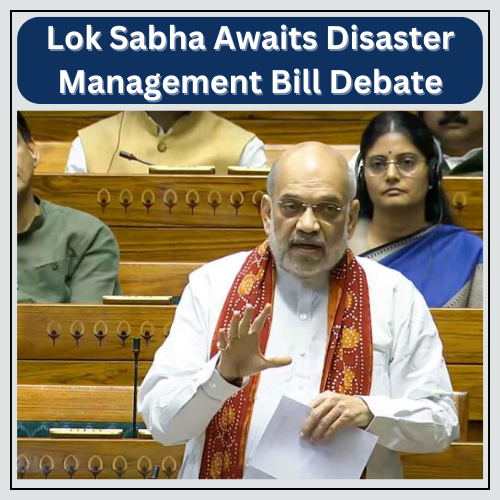Introduction
Hey there, readers! Something big is happening in the halls of the Lok Sabha today, and it’s all about making India more resilient when disaster strikes. The Disaster Management (Amendment) Bill is about to take center stage, and let me tell you, this could change the way we tackle calamities in the future. So, grab a cup of chai, and let’s dive into what this bill is all about, why it matters, and what we can expect when the debate kicks off!
First things first—what is the Disaster Management Act, and why is it suddenly the star of today’s parliamentary show? Well, it’s a law that has been around since 2005, created to guide how India handles natural and man-made disasters. Think floods, earthquakes, cyclones, pandemics—you name it! But like any system that’s nearly two decades old, it’s due for an upgrade.
Enter Amit Shah, our Home Minister, who’s all set to present the Amendment Bill. This isn’t just about tweaking a few rules; it’s about ensuring India is ready for whatever the future throws at us. Sounds exciting, right? But also a bit nerve-wracking, because the stakes are high. Disaster management isn’t just paperwork; it’s about saving lives, protecting communities, and rebuilding when everything falls apart.

Background
Let’s rewind a bit—why do we even need amendments? Over the years, India has faced some pretty brutal disasters, from the Kerala floods to Cyclone Amphan to, of course, the COVID-19 pandemic. These events have shown us where our current policies fall short, whether it’s in speed, coordination, or funding.
The existing Act did its job, but it’s become clear that some things need fine-tuning. For example, how can we better support local governments during a crisis? Or ensure that funds reach the right hands at the right time? These are just some of the issues the amendments are expected to address. In many ways, this Bill feels like hitting the “refresh” button on disaster management in India.
Key Provisions of the Amendment Bill
Now, here’s where it gets really interesting—what’s actually in this amendment? While the full text hasn’t been dissected yet, a few key ideas are making the rounds. First up is enhancing disaster preparedness at every level, from villages to metro cities. This could mean better early warning systems, stronger shelters, and quicker responses.
Another biggie is defining clear roles for everyone involved, from central and state agencies to private sector players. No more last-minute confusion about who’s in charge of what! And let’s not forget funding—there’s talk of a more transparent and effective system for allocating resources. Because, honestly, what’s a plan without proper backing?
Government’s Objectives
So, what’s the government aiming for with these changes? For starters, they want to boost coordination between central and state authorities. Disasters don’t stick to state borders, after all! This means smoother communication, faster decisions, and fewer bureaucratic hiccups.
There’s also a strong focus on resilience—building infrastructure and systems that can withstand disasters instead of just reacting to them. Think flood-resistant homes, advanced medical facilities, and digital tools to track emergencies in real-time. It’s all about being proactive rather than reactive, which sounds like a smart move to me!
Parliamentary Debate Expectations
Now, let’s talk about the debate itself—because you know it’s going to be a lively one! The ruling party is expected to highlight the necessity of the amendments, emphasizing how they’ll make India safer and better prepared. Expect plenty of stats and success stories to back their claims.
But the opposition won’t just sit quietly. They’ll likely question whether the amendments go far enough—or maybe too far in certain areas. Funding is always a hot topic, so don’t be surprised if there’s a heated discussion on where the money will come from and how it will be spent. It’s democracy in action, folks, and it’s going to be fascinating to watch!
Stakeholders’ Perspectives
Beyond the MPs in Parliament, a lot of people have skin in this game. State governments, for one, will be watching closely, as they’re often on the frontlines of disaster response. Will the amendments give them more power or more red tape? That’s the million-dollar question.
Then there are NGOs, environmental experts, and disaster response teams, who’ve been clamoring for reforms for years. They’ll be looking for signs that their voices have been heard. And let’s not forget us, the common citizens! After all, we’re the ones who face the brunt of disasters, so any change in policy has a direct impact on our lives.
Potential Outcomes
So, what happens if the Bill passes? For starters, we could see a more streamlined approach to disaster management, with fewer delays and clearer accountability. This could mean faster relief efforts, better recovery plans, and, ultimately, fewer lives lost.
But, of course, implementation is key. A shiny new law won’t mean much if it isn’t enforced properly. That’s why today’s debate is so crucial—it’s not just about passing the Bill but ensuring it’s strong enough to create real change.
Conclusion
There you have it—a sneak peek into the day’s big event at the Lok Sabha. The Disaster Management (Amendment) Bill isn’t just another piece of legislation; it’s a step toward a safer, more prepared India. Whether it’s a hurricane, a pandemic, or anything in between, we need a system that can rise to the challenge.
So, stay tuned, keep your fingers crossed, and let’s hope our lawmakers bring their A-game to the table. After all, the future of disaster management in India is at stake—and that’s something worth getting excited about!
